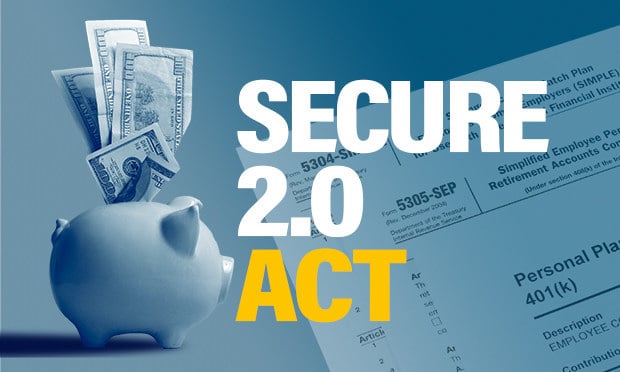<p>CU Times Hawaii Correspondent HONOLULU, Hawaii – Despite September 11′s terrorist attack on the U.S., and a prolonged economic slump, credit unions in the Aloha State are reasonably healthy. In general, credit unions have sustained growth in the face of the worst economic crisis in the history of Hawaii. While leading economists have issued cautious forecasts, credit unions are enjoying expanding membership thanks to innovative marketing initiatives and loan promotions. "Since the attack, money has flowed into credit unions, probably because of a flight to safety factor," Dennis Tanimoto, president and CEO of the Hawaii Credit Union League (HCUL), said. "Because of the volatility in the stock market, and other investment alternatives, some credit union members have withdrawn money out of the market and invested money into credit unions, at least temporarily. As for the long-term effect of the increases in shares, I'm not sure how long it will last. "Our economy is languishing, with heavy dependence on the visitor industry and the Asian economy," Tanimoto continued. "The yen to dollar exchange ratio for example, helps Hawaii in terms of affording goods imported here from Japan or other parts of Asia. However, it hurts the economy because it makes it more expensive for the Japanese to travel here. We've seen a significant decline in visitors from Asia." The terrorist attack and Hawaii's economic slump have affected credit unions directly linked to the visitor industry, whether they are associated with airlines, hotels, union members, and so forth. Credit unions linked to the industry have been affected because many employers downsized their staff and business has suffered. Tanimoto is taking a cautious approach about the economy. Economists in Hawaii foresee a slight recovery beginning toward the latter part of the second quarter this year. By the end of 2002, economists have predicted, the state will be well along to a point before the attack. Credit unions have implemented innovative marketing initiatives to survive. A factor that makes credit unions unique is their ability to attract auto loans, Tanimoto explained. Toward the latter part of 2001, because of zero percent financing auto manufacturers were offering, credit union members chose zero percent financing – which negatively affected credit unions. "It was challenging for the credit unions, some of which have had a relationship with an auto dealer," Tanimoto said. "In Honolulu for example, three of the larger credit unions aligned themselves with the Tony Management (Honda) Group to hold credit union auto sales that offered special discounts for credit union members. The credit unions had lending staff onsite at the dealerships to make loans. Other credit unions have initiated their own programs that were promoted internally, offering discounts at rates on auto loans and other loans to attract qualified borrowers. Some credit unions initiated indirect financing, in which they work with the auto dealers directly. The auto dealers refer new members to credit unions for potential financing. Tanimoto said loan promotions, predominantly, in last quarter of 2001, were focused on auto and personal loans. While credit unions have promoted real estate loans as well, they were less successful in attracting such loans because of the aggressive strategy used by mortgage brokers and others, he said. He added that, "Over the past few years, many credit unions converted to a community charter. In the past, they may have been an occupational credit union. To expand their field of membership, they converted to serve people who live or work within a defined community. That trend is evident on the Big Island, where we have five credit unions that serve the island." Unlike the many challenges from banks credit unions on the mainland have experienced, credit unions and banks in Hawaii has been more cooperative. Credit unions in Hawaii have partnered with banks for many years, particularly with the state's largest bank, Bank of Hawaii. The relationship with Bank of Hawaii for many credit unions has been strong, to the extent that BOH allows members of participating credit unions to use their ATMs, make other transactions, and so forth. A credit union with a single office for example, can expand its reach by having its members do business at various BOH branches. The larger banks such as American Savings Bank have extended similar courtesies to credit unions. Retention of credit union members is accomplished primarily through offering competitive pricing, and exceptional service. Tanimoto noted that these are differentiating factors that most credit union members recognize and appreciate. Attracting new members is accomplished primarily through word of mouth. Increasingly, credit unions are engaging in mass media advertising. Tanimoto noted HCUL's partnered marketing campaign last year in which HCUL purchased advertising on television and in major newspapers. In aggregating the advertising dollars, HCUL achieved the reach and frequency that a larger institution would have accomplished. It would have been difficult for small credit unions to individually achieve the scope of reach and frequency. "The challenges that banks have been making with the field of membership issue, have been primarily on the Mainland," Tanimoto said. "I'm unaware of specific challenges here. The lawsuits to my understanding that are pending on the Mainland dealing with a federal regulator, have been adjudicated. Our credit unions operate independently, for the most part, and they develop their own strategy for promoting loans, expand membership, and so forth. We try not to take the approach that our credit unions compete with each other. They have a specific field of membership and in many cases, the field of membership does not overlap. However, there are cases in which field of membership overlaps. In those cases, the credit union member, or potential member, has the freedom to choose their credit union. "In Hawaii, we have a high net worth ratio that is significantly above the national and regional averages," said Tanimoto. "Our geographic isolation allows credit unions to have a captive audience. As of June 30, 2001, the membership of credit unions here was 630,000. When you compare that with our statewide population of 1.2 million residents, it shows that nearly one out of two residents is a credit union member. The fallacy is that a person can belong to more than one credit union. However, relative to other states, that's a high penetration ratio of credit union members to the population. In addition, the population of our state is not growing tremendously, so as the penetration increases, it grows more difficult to recruit new members. It poses a challenge because of our physical isolation."</p>
Complete your profile to continue reading and get FREE access to BenefitsPRO, part of your ALM digital membership.
Your access to unlimited BenefitsPRO content isn’t changing.
Once you are an ALM digital member, you’ll receive:
- Breaking benefits news and analysis, on-site and via our newsletters and custom alerts
- Educational webcasts, white papers, and ebooks from industry thought leaders
- Critical converage of the property casualty insurance and financial advisory markets on our other ALM sites, PropertyCasualty360 and ThinkAdvisor
Already have an account? Sign In Now
© 2024 ALM Global, LLC, All Rights Reserved. Request academic re-use from www.copyright.com. All other uses, submit a request to [email protected]. For more information visit Asset & Logo Licensing.








